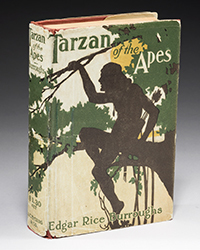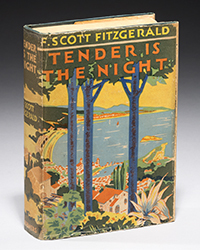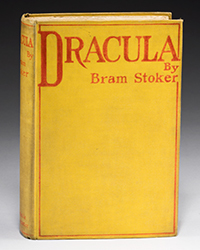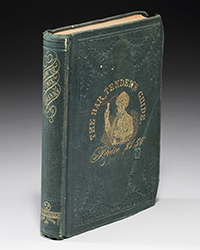It will be alleged, and such has been the impression endeavoured to be produced by almost all the late writers on the subject of slavery, that this and similar instances of cruelty may be traced to the circumstance of the white people purchasing black slaves on the Coast of Africa. This has been hejd up as the only inducement to those wars among the natives, by which captives are acquired, and, of consequence, all the horrors attending the subsequent stages of slavery. Such, however, is not the case. Slavery, in its worst form, has existed to a great extent in Africa from the earliest ages, long previous to its introduction into Europe; and, according to the authority of Mr. Park, heretofore quoted, at this moment three fourths* ( Lander goes still farther, and estimates the slaves at four fifths of the whole number of inhabitants. ) of the negroes of Africa are in a state of hereditary bondage to a race of barbarians, whose temper and habits may be gathered from the following extracts from the same and various other writers :—
"We found many of the natives dressed in a thin French gauze, which they call Bygui; this being a light, airy dress, well calculated to display the shape of their persons, is much esteemed by the ladies. The manners of these females, however, did not correspond with their dress, for they were rude and troublesome to the last degree. They surrounded me in numbers, begging for amber beads, &c, and were so vehement in their solicitations, that I found it impossible to resist them. They tore my cloak, cut the buttons from my boy's clothes, and were proceeding to other outrages, when I mounted my horse and rode off, followed for half a mile by a body of these harpies."The following furnishes a still more striking exhibition of barbarism.
"While I was examining the countenance of this inhospitable old man, and endeavouring to find out the cause of the sullen discontent that was visible in his eye, he called to a slave who was working in a corn-field at a little distance, and ordered him to bring his paddle along with him. The Dooty then told him to dig a hole in the ground, pointing to a spot at no great distance. The slave, with his paddle, began to dig a pit in the earth, and the Dooty kept muttering and talking to himself until the pit was almost finished, when he repeatedly pronounced the word Donkaloo—good for nothing; Jankra lemen- a real plague—which expressions I thought could be applied to nobody but myself; and as the pit had very much the appearance of a grave, I thought it prudent to decamp, when the slave, who had before gone to the village, to my surprise returned with the corpse of a boy, about nine years of age, quite naked. The negro carried the body by a leg and an arm, and threw it into the pit with a savage indifference which I had never before seen. As he covered the body, the Dooty often expressed himself naphula littiniata— money lost—whence I concluded the boy had been one of his slaves."The following examples of barbarous warfare are taken almost at random from the same work. Speaking of the siege of Sai, by the King of Bambarra, Mr, Park says :—
"After a siege of two months, the townspeople became involved in all the horrors of famine, while the king's people were feasting in their trenches; they saw with pleasure the miserable inhabitants of Sai devour the leaves and bark of the Bentangtree that stood in the middle of the town. Finding, however, the besieged would sooner perish than surrender, the king had recourse to treachery. He promised that, if they would open their gates, he would put no person to death, nor suffer any injury, but to the Dooty alone. The Dooty was sent accordingly, and immediately put to death. His son, in attempting to escape, was caught and massacred in the trenches; and the rest of the townspeople were carried away captive, and sold as slaves to the different negro-traders."In travelling from Farra to Balaba, he says—" I passed, in the course of tins day, the ruins of three towns, the inhabitants of which were all carried away by Daisy, King of Kaarta, on the same day that he took and plundered Yamina." In addition to these exhibitions of the rankest barbarity, we learn, from a late traveller through the interior of Africa, that the King of Dahomey is engaged in perpetual wars, not only for the purpose of acquiring slaves, but with the pious object of watering the graves of his ancestors with the blood of his captives. The tombs, palaces, and temples of his capital are ornamented with the sculls and jawbones of his enemies captured in war; the floors of his private chambers and halls of audience paved, and the roof covered, with the like trophies of stupid, unfeeling barbarism; and it is considered a sufficient cause of war, that the graves of his ancestors require "more watering," or that his palace wants a new covering.
The same writer states, that on one occasion which came within his knowledge, three thousand victims were sacrificed at the grave of the mother of an Ashantee king, and two hundred slaves weekly, for the space of three months. These two kingdoms were at that time entirely free from the influence of the foreign slave-trade; the demand for slaves being consequently diminished, their value decreased in proportion, and they were thus wantonly sacrificed to " the genius of injured Africa." Shall we waste our sympathies on such remorseless barbarians, or weep that so many of their victims have found a refuge in the United States from such freedom as this? Shall we consummate our folly and weakness by placing our peace and union, our interests and happiness, in most imminent jeopardy, for the sake of experimenting on incurable barbarism and inflexible ignorance?
In concluding his remarks on the condition of slaves in Africa, Mr. Park delivers the following opinion, which is recommended to the attention of the abolitionists, not for the purpose of defending the odious traffic in slaves by Christian nations, but simply as giving the result of the experience and reflections of the writer.
"Such are the general outlines of that system of slavery which prevails in Africa, and it is evident, from its nature and extent, that it is a system of no modern date. It probably had its origin in the remote ages of antiquity, before the Mahometans explored a path across the Desert. How far it is maintained and supported by the slave traffic, which for two hundred years the nations of Europe* (For an historical detail of the origin and progress of this trade, the reader is referred to " A Twelvemonth's Residence in Jamaica, by R. R. Madden, M, D." England occupies a conspicuous place.) have carried on with the natives of the coast, it is neither within my province nor in my power to explain. If my sentiments should be desired concerning the effect which a discontinuance of this commerce would produce on the manners of the natives, I should have no hesitation in saying, that in the present unenlightened state of their minds, my opinion is, the effect would neither be so extensive or beneficial as many wise and worthy persons fondly expect."




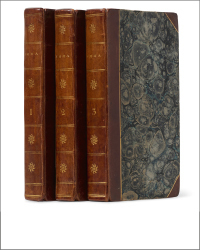
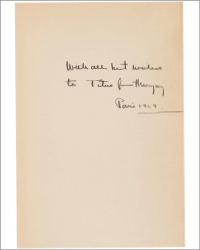






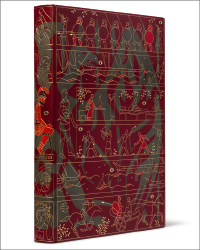
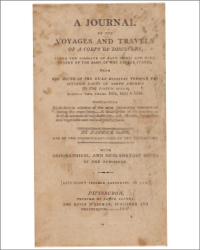

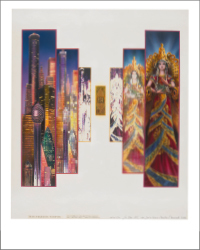
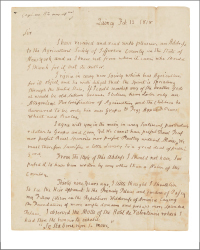

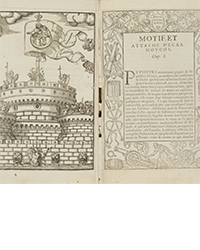
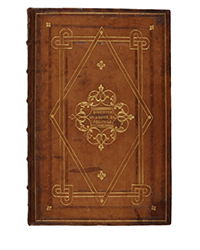
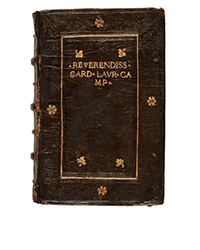
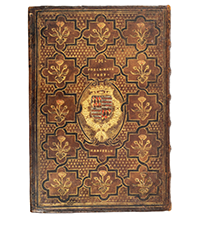
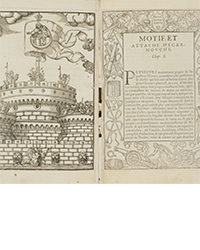

![<b>Sotheby’s, Dec. 16:</b> [Austen, Jane]. A handsome first edition of <i>Sense and Sensibility,</i> the author's first novel. $60,000 to $80,000. <b>Sotheby’s, Dec. 16:</b> [Austen, Jane]. A handsome first edition of <i>Sense and Sensibility,</i> the author's first novel. $60,000 to $80,000.](https://ae-files.s3.amazonaws.com/AdvertisementPhotos/9a74d9ff-42dd-46a1-8bb2-b636c4cec796.png)


![<b>Heritage, Dec. 15:</b> John Donne. <i>Poems, By J. D. With Elegies on the Author's Death.</i> London: M[iles]. F[lesher]. for John Marriot, 1633. <b>Heritage, Dec. 15:</b> John Donne. <i>Poems, By J. D. With Elegies on the Author's Death.</i> London: M[iles]. F[lesher]. for John Marriot, 1633.](https://ae-files.s3.amazonaws.com/AdvertisementPhotos/8caddaea-4c1f-47a7-9455-62f53af36e3f.jpg)
